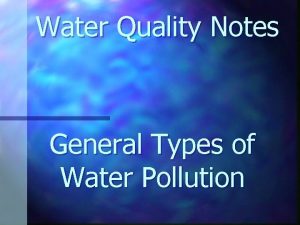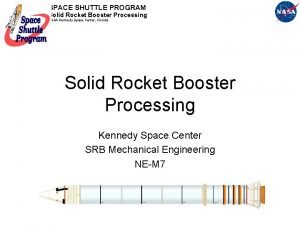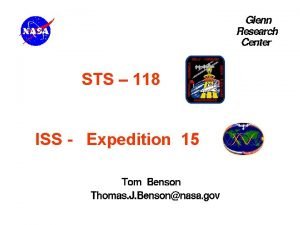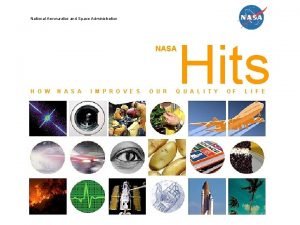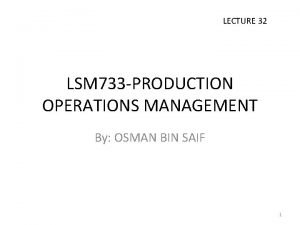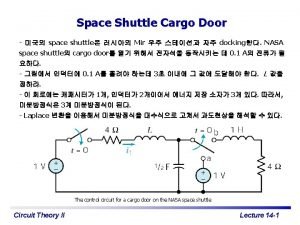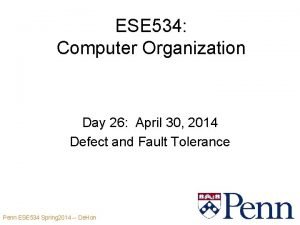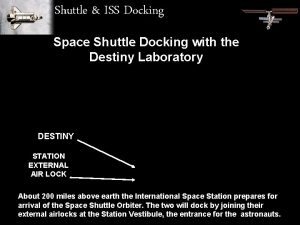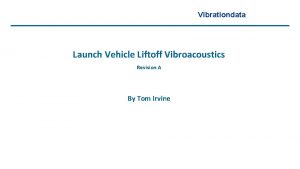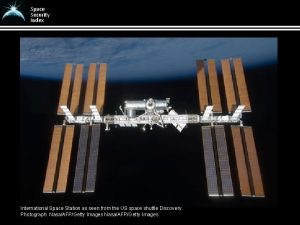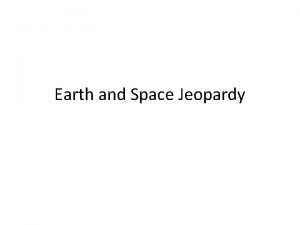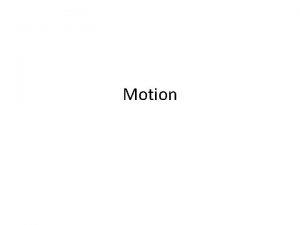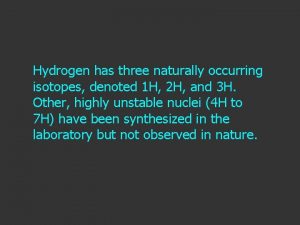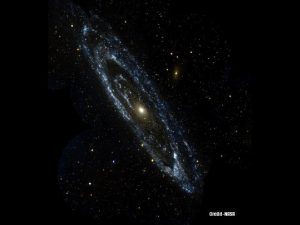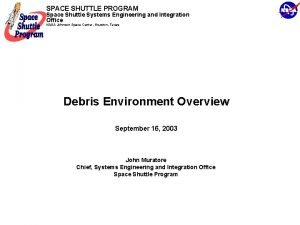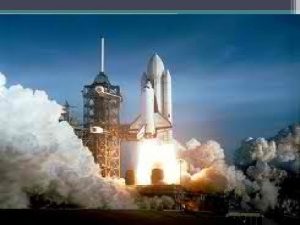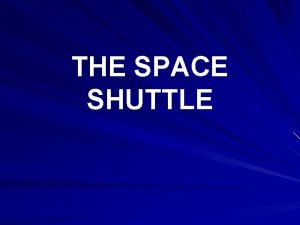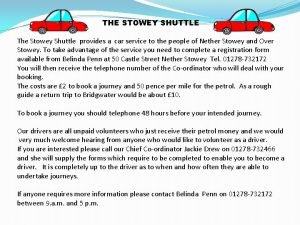Space Shuttle Information PHOTO CREDIT NASA Next Purpose



























- Slides: 27

Space Shuttle Information PHOTO CREDIT: NASA Next

Purpose The purpose of this presentation is to: 1. teach valuable information about the Space Shuttle and the systems that make up each of its three main components 2. prepare students for an interactive shuttle launch simulation 3. increase students’ ability to navigate, locate, and record specific information using various computer media 4. open the door to a variety of in-depth studies of related math, science, and technology concepts Next

Purpose The Space Shuttle External Tank SRB Orbiter The Space Shuttle as we know it today is made up of three unique components. Each component serves a very important role in helping the Space Shuttle reach its orbit in space. To the left, you see a drawing of the Space Shuttle and its three main components. 1. ET- External Tank 2. SRB - Solid Rocket Booster 3. OV- Orbiter Vehicle As part of the new employee orientation, you will need to know all about the Shuttle components. Using the navigation buttons, select one of the components to find out more detailed information about that component and its specific systems. When you have learned as much as you can, navigate back to this page and choose a different component. Next

The Orbiter The orbiter is the manned spacecraft of the Space Shuttle’s three main components. It can transport into near earth orbit (115 to 690 miles from the earth’s surface) cargo weighing up to 56, 000 pounds, and it can return with up to 32, 000 pounds. This cargo, called payload, is carried in a bay 15 feet in diameter and 60 feet long. The major structural sections of the orbiter are: • the forward fuselage, which contains the pressurized crew compartment • the mid fuselage, which contains the cargo bay • the aft fuselage, from which the main engine nozzles project • the vertical tail, which serves as a speed brake used during entry and landing Challenger Discovery Atlantis Endeavour Next

The Orbiter The crew compartment is divided into two levels, the flight deck on top and the middeck below. The flight deck includes all flight controls used for launch, rendezvous operations, and landing. The middeck provides the crew's working, eating, and sleeping environment. It also houses the electronic, guidance, and navigation systems. The orbiter normally carries a flight crew of up to 7, but a total of 10 people could be carried under emergency conditions. Columbia Challenger Discovery Atlantis Endeavour Next

Main Engines The Space Shuttle orbiter has three main engines weighing 7, 000 pound each. They are very sophisticated power plants that burn liquid hydrogen with liquid oxygen, both from the external tank (ET). The main engines are located in the aft (back) fuselage (body of the spacecraft). They are used for propulsion during launch and ascent in to space with the aid of two powerful solid rocket boosters (SRBs). The main engines provide 29% of the thrust needed to lift the shuttle off the pad and into orbit. Each engine can generate almost 400, 000 pounds of thrust at liftoff. Next

Fuel As the Shuttle accelerates, the main engines burn a half-million gallons of liquid propellant provided by the ET. The main engines burn liquid hydrogen (LH 2) -- the second coldest liquid on Earth at -423 degrees Fahrenheit (minus 252. 8 degrees Celsius) -- and liquid oxygen. Cryogenic propellants are liquid oxygen (LOX), which serves as an oxidizer, and liquid hydrogen (LH 2), which is a fuel. In gaseous form, oxygen and hydrogen have such low densities that extremely large tanks would be required to store them aboard a rocket. But cooling and compressing them into liquids vastly increases their density, making it possible to store them in large quantities in smaller tanks. Next

Oxidizer from the external tank enters the orbiter's main propulsion system liquid oxygen feed line. Here it branches out into three parallel paths, one to each engine. In each branch, a liquid oxygen prevalve must be opened to permit flow to the low-pressure oxidizer. Low Pressure Oxidizer Turbopump (LPOT) is an axial-flow pump driven by a six-stage turbine powered by liquid oxygen. The flow from the LPOT is supplied to the High-Pressure Oxidizer Turbopump (HPOT). The HPOT consists of a main pump and a preburner pump. The main pump boosts the liquid oxygen's pressure. The Low Pressure Fuel Turbopump (LPFT) is an axialflow pump driven by a twostage turbine powered by gaseous hydrogen. It boosts the pressure of the liquid hydrogen The High Pressure Fuel Turbopump (HPFT) is a threestage centrifugal pump driven by a two-stage, hot-gas turbine. It boosts the pressure of the liquid hydrogen Next

Thrust The three Space Shuttle Main Engines, in conjunction with the Solid Rocket Boosters, provide thrust to lift the Orbiter off the ground for the initial ascent. The main engines continue to operate for 8. 5 minutes after launch, the duration of the Shuttle's powered flight. After the solid rockets are jettisoned, the main engines provide thrust which accelerates the Shuttle from 4, 828 kilometers per hour (3, 000 mph) to over 27, 358 kilometers per hour (17, 000 mph) in just six minutes to reach orbit. They create a combined maximum thrust of more than 1. 2 million pounds. The Space Shuttle Main Engines provide part of the thrust that sends the Shuttle into orbit. Click image to play video of engines firing on launch. Next

Additional Info The inner surface of each combustion chamber, as well as the inner surface of each nozzle, is cooled by gaseous hydrogen flowing through coolant passages. Thermal protection for the nozzles is necessary at the nozzle/engine attach point because of the exposure that portions of the nozzles experience during the launch, ascent, on-orbit and entry phases of a mission. The insulation consists of four layers of metallic batting covered with a metallic foil and screening. The five propellant valves on each engine (oxidizer preburner oxidizer, fuel preburner oxidizer, main fuel, and chamber coolant) are hydraulically actuated and controlled by electrical signals from the engine controller. The main oxidizer valve and fuel bleed valve are used after shutdown of the SSMEs approximately eight and a half minutes after liftoff. . The main oxidizer valve is opened during a propellant dump to allow residual liquid oxygen to be dumped overboard through the engine, and the fuel bleed valve is opened to allow residual liquid hydrogen to be dumped through the liquid hydrogen fill and drain valves overboard. After the dump is completed, the valves close and remain closed for the remainder of the mission Next

OMS The Orbital Maneuvering System (OMS) is one of two systems that allow the shuttle obiter to maneuver once it is in space. This system is composed of two small rocket engines that are located in the aft fuselage, just to either side of the upper main engine. The OMS is vital to getting the orbiter into its correct orbit (includes putting the orbiter into its proper orbit before reentry). Approximately 10. 5 minutes after liftoff (about 1 1/2 minutes after the external tank is jettisoned), the OMS rockets are fired to help put the orbiter into a low orbit. Around 45 minutes after liftoff, they are fired again to elevate the orbiter into its mission orbit, roughly 250 miles above the surface of the earth. NASA uses special liquid fuel that does not require a spark igniter. Liquid nitrogen tetroxide produces an explosion when mixed with liquid monomethyl hydrazine. This fuel and oxidizer combination allows these two rockets to produce 6, 000 pounds of thrust each. This is enough thrust to change the orbiters acceleration by 2 ft per second squared or change its velocity by 1000 feet per second. Watch Video Next

RCS The reaction control system (RCS) on the orbiter is very similar to the OMS. It helps to maneuver the orbiter in more delicate situations. Two prime examples of when the RCS is used is when the orbiter is docking with the International Space Station (ISS) or capturing a satellite to be repaired. The RCS consists of 44 small nozzles that are fueled by the same liquid nitrogen tetroxide and monomethyl hydrazine combination as the OMS. Six of these engines produce a thrust of 25 pounds each, while the other 38 produce 870 pounds of thrust each. Since the RCS is used for delicate maneuvering, different combinations and durations of engine burns can be used. RCS OMS (Ju st o This shows one cluster of RCS engines found next to the left aft OMS engine. Additional engines are found next to the right aft OMS engine as well as on the side and nose of the orbiter. ff p ictu Next re)

ECLSS The environmental control and life support system (ECLSS) provides a pressurized and livable environment for the orbiter’s crew. This environment is not only important for the crew, but it is essential to the protection and proper functioning of the onboard avionics. An additional function of the ECLSS is the management, storage, and disposal of water and crew waste. Below is a diagram of the orbiter and the individual parts that make up the ECLSS: Four Main Sub-Systems 1. Pressure Control System: maintains a pressure of 14. 7 psia of a breathable mixture of oxygen and nitrogen in the crew compartment. Nitrogen also is used to pressurize wastewater tanks. 2. Atmospheric Revitalization System: uses circulated air and water coolant loops to remove heat, control humidity, and purify the air in the cabin. 3. Active Thermal Control System: uses two Freon loops to collect heat from the orbiter’s waste systems and transfer it overboard. 4. Supply & Wastewater System: stores water that is produced by the fuel cells for use by the orbiter crew (drinking, cooking, hygiene). It also stores liquid waste produced by the crew, as well as wastewater collected from the humidity separator. It has the ability to dump both supply and wastewater overboard. Next

Solid Rocket Boosters The solid rocket boosters, or SRBs, are the largest solid fuel motors ever used in space flight, and are also the first designed to be reusable. Each booster rocket is attached to either side of the external tank (ET) Each SRB weighs approximately 1, 300, 000 pounds (589, 670 kg) at launch with roughly 85 percent being the weight of the solid fuel itself. When the Shuttle’s three main parts are assembled and placed on the mobile launch platform, the weight of the ET and the orbiter are held up by the two SRBs. Each SRB is bolted to the launch platform by four pyrotechnic bolts. The two SRBs provide 71. 4 percent of the main thrust needed to lift the Space Shuttle off the launch pad. Each booster has a thrust of approximately 3, 300, 000 pounds (14, 685 kilonewtons) at launch and help lift the Shuttle up to an altitude of about 150, 000 feet, or 28 miles (50 kilometers). The SRBs burn for approximately two minutes and are then jettisoned. During their decent, three main parachutes are deployed from the top of each SRB to allow for a safe splashdown in the Atlantic Ocean. Click to see how the Shuttle SRB operates. Click to visit “How Stuff Works” website to get additional information on how solid rockets work. Next

External Tank The external tank (ET) is the largest of the three main parts of the shuttle system (ET, SRBs, orbiter). When fully loaded, it becomes the heaviest element of the shuttle as well, going from 66, 000 pounds to 1, 655, 600 pounds. The ET’s liquid hydrogen (fuel) and liquid oxygen (oxidizer) supplies the three Space Shuttle main engines (SSMEs), located in the orbiter, during launch and ascent into space. Fuel from the ET begins to be consumed 6 seconds prior to launch of the Shuttle as the main engines power up to 90 percent. The ET continues to supply fuel to the SSMEs until all of the liquid fuel is consumed and the shuttle approaches its orbit, the ET is jettisoned off. As it passes back through the atmosphere, it begins to disintegrate. Any parts not completely destroyed falls into the remote parts of the ocean and are never recovered or reused. Three important components of the ET are the 1. Oxygen tank 2. The intertank 3. Hydrogen tank Next

Oxygen Tank The liquid oxygen tank is made out of aluminum monocoque and operates in a pressure range of 20 to 22 psig (pressure per square inch-gauge). The tank contains anti-slosh and anti-vortex structures to reduce fluid motion during launch and ascent into space. The tank feeds into a 17 inch diameter line that transports the liquid oxygen through the intertank, then outside the ET to the SSMEs. The 17 -inch-diameter feed line allows liquid oxygen to flow at approximately 2, 787 pounds per second with the SSMEs operating at 104 percent (that is equal to a maximum flow of 17, 592 gallons per minute). The liquid oxygen tank's double-wedge nose cone reduces drag and heating, contains the vehicle's ascent air data system, and serves as a lightning rod. The liquid oxygen tank's volume is 19, 563 cubic feet (143, 351 gallons) and is 331 inches in diameter, 592 inches long, and weighs 12, 000 pounds empty (1, 361, 936 pounds full). IMAGE CREDIT: NASA Next

Intertank The unpressurized intertank is a steel and aluminum cylindrical structure that is joined on either end to the liquid oxygen and liquid hydrogen tanks. The intertank houses ET instrumentation components and contains an umbilical plate that allows for the detection (especially of hazardous gases) and release of excess gas supplies (mainly boiled of hydrogen). The intertank is 270 inches long, 331 inches in diameter and weighs 12, 100 pounds. Next

Liquid Hydrogen Tank The liquid hydrogen tank is an aluminum structure. The hydrogen tank is 2. 5 times larger than the oxygen tank but weighs only one-third as much when filled to capacity. The reason for the difference in weight is that liquid oxygen is 16 times heavier than liquid hydrogen. Next

The Orbiter Fleet Height (on runway) 17. 2 meters (56. 58 feet) Length 37. 2 meters (122. 17 feet) Wingspan 23. 8 meters (78. 06 feet) Explore! The 5 space shuttle orbiters below have a rich legacy. When you arrive at each orbiter page, you will find mission patches. You can click on each for details of that mission. Columbia Challenger Discovery Atlantis Endeavour Next

Orbiter Columbia (OV-102): Delivered to KSC in 1979 to be the first orbiter fitted for space flight. Several integration tests were conducted on Columbia from 1979 to 1980. A flight readiness firing test took place in February of 1981. Two months later on April 14, Commander John Young and Pilot Robert Crippen were aboard Columbia when it became the first reusable space vehicle launched into space. Seven months later, Columbia became the first reusable space vehicle to be re-launched into space. From 1981 to 2003, Columbia flew 28 separate missions. On its last mission (STS-107), the orbiter and its crew were lost during re-entry. Next

Orbiter Challenger (OV-99) : Delivered to KSC in 1982 after having been modified from its original form as high-fidelity structural test article (allowed special test to better understand the incredible forces the orbiter would be subjected to during launch and landing). Because NASA had only one working orbiter at the time, it was decided to allow the conversion of the test vehicle into a space rated orbiter. Challenger flew nine successful missions from 1983 to 1985. In 1986, 51 L was to be Challengers 10 th space mission; however, the orbiter and crew were lost during launch. Next

Discovery Orbiter Discovery (OV-103): Delivered to KSC in 1983 and becoming the third of space flight ready orbiters. Because of valuable data gained in the construction and testing of the previous orbiters, the rollout weight of Discovery was 6, 870 pounds less then Columbia. This reduced weight would allow for heavier payloads to be transported into space. Several special modifications have been made to Discovery to allow it to carry specialized payloads. Since its first launch in 1984, it has successfully carried out 30 missions. Discovery is still in active service. Next

Orbiter Atlantis (OV-104): Delivered to KSC in 1985 becoming the forth active space ready orbiter. As with Discovery, Atlantis was the product of many learned lessons. It had a rollout weight of 6, 974 pound less than Columbia and was assembled having a 50 percent reduction in man hours (compared to Columbia). Atlantis was first launched in October of 1985 and has successfully completed 26 missions. Atlantis is still in active service. Next

Orbiter Endeavour (OV-105): Delivered to KSC in 1991 as the most advanced orbiter in the fleet to replace the lost Challenger orbiter. Many of the technological advances found in the various systems of Endeavour were later integrated into the other remaining orbiters. Endeavour is capable of flying missions of up to 28 days if needed. Since its inaugural flight in 1992, it has flown 19 successful missions. Endeavour is still in active service. Next

Terminology/Acronyms ET - External Tank KSC - Kennedy Space Center LCC - Launch Control Center OPF - Orbiter Processing Facility SLF - Shuttle Landing Facility STS - Space Transportation System VAB - Vertical Assembly Building RSS - Rotating Service Structure OWP - Orbiter Weather Protection

Terminology/Acronyms OV - Orbiting Vehicle OV-099 - Challenger OV-102 - Columbia OV-103 - Discovery OV-104 - Atlantis OV-105 - Endeavour

Your Mission Now that you’ve learned everything you can about the Space Shuttle, complete these fun activities per your teacher’s directions. • Scavenger Hunt • Word Search • Crossword • Orbiter Labeling
 High level of pollution
High level of pollution Solid rocket booster
Solid rocket booster Nasa space shuttle
Nasa space shuttle Nasa space shuttle
Nasa space shuttle Nasa ho
Nasa ho Nasa space shuttle
Nasa space shuttle Nasa space shuttle
Nasa space shuttle Nasa space shuttle
Nasa space shuttle Nasa space shuttle
Nasa space shuttle Impulse response laplace
Impulse response laplace Nasa space shuttle
Nasa space shuttle Food safety culture policy statement
Food safety culture policy statement Ese
Ese X.next = x.next.next
X.next = x.next.next Space shuttle iss docking
Space shuttle iss docking Space shuttle discovery
Space shuttle discovery Space shuttle discovery
Space shuttle discovery Space shuttle discovery
Space shuttle discovery Space shuttle discovery
Space shuttle discovery Earth science jeopardy
Earth science jeopardy Http://teachertech.rice.edu/participants/louviere/newton/
Http://teachertech.rice.edu/participants/louviere/newton/ Space shuttle discovery
Space shuttle discovery Space shuttle main engine
Space shuttle main engine Katutubong awit depinisyon
Katutubong awit depinisyon Calipso data download
Calipso data download Ngc 6822
Ngc 6822 Photo credit
Photo credit Photo credit
Photo credit
